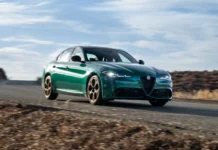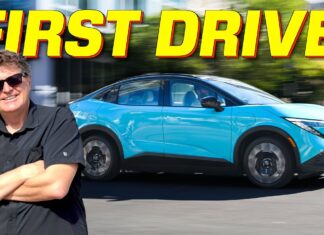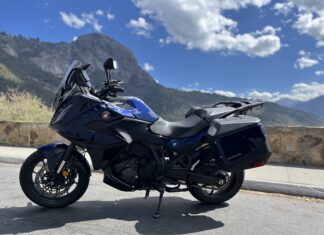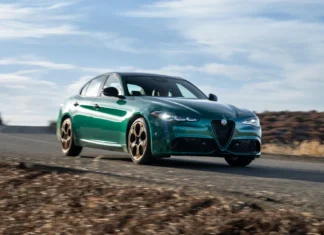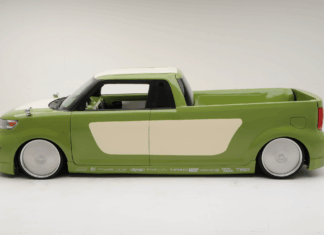While the automaker isn’t rushing headlong into EVs, it is offering this model to Chinese customers.
When it was still in production, I and most of the automotive media praised the Mazda6 as one of the best looking sedans in the segment. Sadly, with the waning market, Mazda’s third-generation 6 went the way of the dodo in 2021 for the North American market, and bowed out altogether late last year. Now its successor has arrived, making its debut at the Beijing Auto Show: the Mazda EZ-6.
Unfortunately, if you were expecting a rotary renaissance, that Mazda would revive the 6 as a straight-six sedan, or we’d see some follow-up in the U.S. market at all, the answer is “none of the above”. While this car is actually rear-wheel drive, it’s fully electric and only going on sale in China later this year.


Mazda developed the EZ-6 in coordination with Chinese automaker Chengan, as most foreign companies selling cars in China do so though a joint venture (with Tesla being a notable exception). This new model has fairly classic sedan proportions and sleek exterior styling with thin LED lights at both ends. However, it is roughly an inch longer than the old Mazda6 sedan, and this car has plenty of special touches like a retractable wing at the rear and a far different interior than anything we get in the States.
Looking inside the Mazda EZ-6
Looking inside, we see some decidedly un-Mazda-like design cues, like a two-spoke steering wheel and a conspicuous lack of physical buttons where but the steering wheel. Instead, it appears occupants control most items through the 14.6-inch central infotainment screen (that also gets gesture and voice controls), while the driver gets another 10.2-inch digital instrument cluster.


The rear seat passengers get more controls still, including haptic controls for the HVAC system.
What about the powertrain?
Mazda did not share too many specifics about what powers the EZ-6, apart from the fact that it is electric and rear-wheel drive. The automaker touts 50:50 weight distribution between the front and rear axles, front strut suspension and multilink rear suspension.
As for range, Mazda says the BEV model will have an expected driving range of about 373 miles (600 kilometers). The EZ-6 will also sell as a plug-in hybrid with more than 621 miles of range, but the company said precisely nothing about which engine is under the hood, how large the battery is, or anything else of consequence. Both range figures use the “CLTC” testing cycle, so it’s unclear how that would transfer to EPA range. Not that such a figure is relevant anyway, since there is no sign this car will make it to North America, even as a PHEV.
But that’s not all…
Beyond the EZ-6, Mazda also brought a concept much more likely to appeal to American buyers: the Arata concept. Promising “Soulful + Futuristic x Modern” design (I suppose we’re meant to do the math on that to see which elements crop up in what proportions there), this electric SUV evolves the existing Kodo aesthetic into a new era of vehicles.
While the first impressions give off strong CX-5 vibes, the Arata brings in a few new aerodynamic touches. Mazda integrated air tunnels at the tips of the hood and on both sides of the front bumper, and inside the D-pillars, for example. In addition to just making it look cooler, the company says those features “contribute to improved environmental performance”, which I take to mean “better range”.
If you’re excited to see this SUV over here, don’t get too excited yet: Mazda has not confirmed the Arata will make it into production form over here either. Instead, this will be the automaker’s second EV in China following the EZ-6.
Look, after the dismal performance of the MX-30 on our shores, it’s understandable why we aren’t seeing new electric car plans in the U.S. at the moment. With EV sales plateauing, as well, the smart move right now is toward plug-in hybrids, as Mazda’s done with both the CX-90 and CX-70.
While some expressed their consternation at Mazda’s evident refusal to launch the EZ-6 in our market, I also get why it won’t arrive in North America. However, the Arata is a much better option to launch (in some form) over here, given Americans’ strong preference for SUVs. Just as it was an incredibly important decision to launch its own SUV with the CX-5 more than a decade ago, it makes a great deal of sense to lead a revitalized EV charge in the American market with a model that can compete against the likes of the Tesla Model Y, Ford Mustang Mach-E and Hyundai Ioniq 5, among a growing list of contenders.
As ever, we’ll have to wait to hear (and see) more about Mazda’s electrification plans for the U.S. market in the coming years, as it completes its current SUV revamp with the CX-70.





